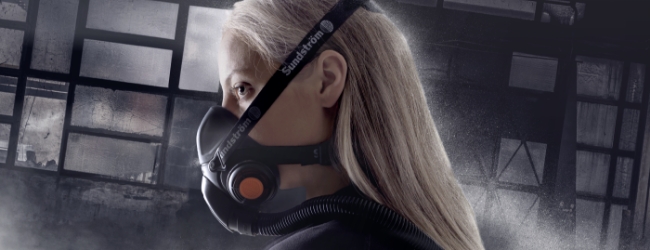
Respiratory protection
For your lungs and airways to be able to fulfill their vital functions both today and in the future, it is required that you protect them against harmful pollutants. Some particles or gases are not only unpleasant to breathe, but so dangerous that they could cause life-long and sometimes fatal illness.
Which respirator should I choose?
Suitable respiratory protection must be used in all situations where there is a risk of harmful particles or gases. The respiratory protection must be adapted to the user and the work. Here you will find more information on what is important to know about respiratory protection.
There are several types of respirators and different functions. The difference is partly about how effectively they protect against air pollution, and partly in which environments they are meant to be used. Respiratory protection can be divided into filter masks and fan-assisted respiratory protection. The filter masks have a filter that somehow separates particles or gases from the breathing air. Fan-assisted devices instead supply air or oxygen that must be free of contamination from tubes, compressed air units or from the outdoor environment. Read more about different types of respiratory protection.
Which filter should I use?
For the respirator to protect against the air pollution found in the work environment, the right kind of filter must be used. Some filters filter out particles, some separate gases and some are a combination of both.
Read more in Sundströms filter selection guide about how to choose the right filter and protection based on your work.
Our respirators are marked with the EN standard to ensure quality. Read more about standards for respiratory protection.
What happens if I don't use the correct respirator protection?
Gases and vapors from various chemicals are not healthy to breathe. They enter the blood and can thus damage internal organs. Some gases are even fatal in larger doses. Particles that are inhaled get stuck in the respiratory system. The coarser particles get stuck in the mucous membranes of the nose and trachea. You can cough up or spit out some of these. The smallest particles can travel all the way down to the alveoli and get stuck there. Read more about the risk area particles and gas.






